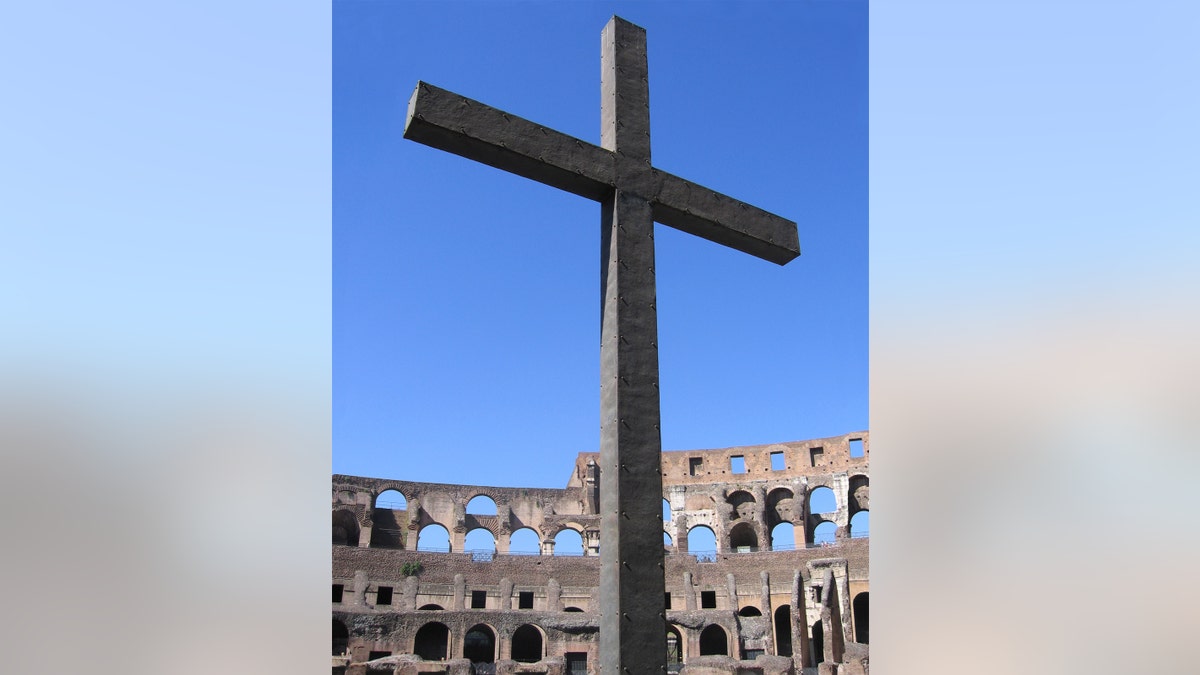How Jesus died: Ancient crucifixion victim offers new clues
New analysis of a heel bone found in Gavello, near Venice, in 2007 may offer fresh insight into Roman crucifixions, the brutal execution method used to execute Jesus Christ.
The discovery of an ancient skeleton in northern Italy could shed new light on brutal Roman crucifixions. There is relatively little archaeological evidence of crucifixions, the method used to execute Jesus Christ, according to Christian tradition.
New analysis of a heel bone found in Gavello, near Venice, in 2007 may offer fresh insight into the brutal execution method, which was widely used in the Roman Empire.
In a paper published in the journal of Archaeological and Anthropological Sciences, a team of researchers from the University of Ferrara and the University of Florence explain that the remains may belong to a crucifixion victim.
ANCIENT ROMAN BOXING GLOVES DISCOVERED NEAR HADRIAN'S WALL
“This discovery is significant because this evidence is rarely found,” explained Emanuela Gualdi-Russo, an anthropology professor at the University of Ferrara, and one of the study's authors, in an email to Fox News.

The Cross of Martyrs in the ruins of the Colosseum, Rome. (iStock) (Mark Goddard)
There is only one well-documented anthropological case of crucifixion in the world, according to the experts. In 1968, archaeologists found a heel bone with a nail driven through it at Giv’at ha-Mivtarat, a first century A.D. burial cave in Jerusalem.
Gualdi-Russo noted that bones pierced with nails are easily fractured, making them difficult to distinguish and interpret. The Express reports that a number of other factors make it difficult for archaeologists to identify crucifixion sites.
In addition to the disintegration of wooden crosses, the nails used in crucifixions were perceived as having magical qualities, which meant that they were removed from victims’ bodies.
DRAMATIC VOLCANO DEATH: HUGE FLYING STONE CRUSHED MAN IN POMPEII, ARCHAEOLOGISTS DISCOVER

File photo - The Crucifixion. Mosaic in Evangelical Lutheran Church of Ascension, Jerusalem (iStock) (sedmak)
When they examined the human remains discovered at Gavello, experts discovered that the wound passes through the “entire width” of the heel bone, according to the Express. A digital microscope was used to create 3-D images of the hole.
Analysis of the remains reveals that they belong to a man of below-average height and slim stature, who was between 30 and 34 years of age when he died, according to LiveScience. A fracture in the heel bone indicates that a metal nail was driven through the heel, from the inside to the outside of the right foot, LiveScience reports. This was nailed either directly to the wood of the cross or to a wooden footrest.
There are no signs that the victim’s wrists were nailed to the cross. His arms may have been tied to the cross with rope, according to the researchers.
ROMAN SWORDS UNEARTHED AT ANCIENT CAVALRY BARRACKS NEAR HADRIAN'S WALL

File photo (AP2014)
The body was also placed directly in the ground, not a tomb, and was buried without any burial goods, which is unusual for a Roman burial.
Ancient Rome continues to reveal its secrets. The recent discovery of a skeleton at the famous Pompeii archaeological site in Italy has revealed the gruesome fate that befell one of the ancient victims of the Mount Vesuvius eruption. Last month archaeologists also discovered the final resting place of an ancient racehorse among the ruins of the ancient city of Pompeii in Italy.
Earlier this year, an extremely rare marble head depicting the Roman Emperor Marcus Aurelius was unearthed in Egypt.
ANCIENT ROMANS PAINTED HORRIFYING BLOOD-RED WARNINGS ON WALL ACROSS SCOTLAND
Archaeologists in the U.K. have discovered ancient boxing gloves at the Roman fort of Vindolanda, just south of Hadrian’s Wall in Northern England.
Gualdi-Russo told Fox News that, while the current study of the bones discovered in northern Italy is concluded, future investigations can’t be ruled out.
Follow James Rogers on Twitter @jamesjrogers

